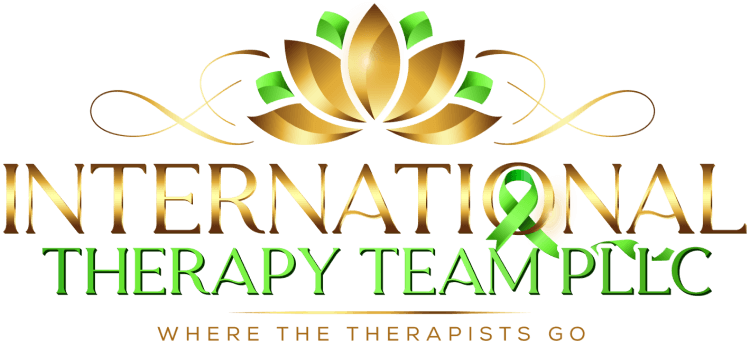Welcome to a foundational exploration of family therapy, a pivotal approach to healing and understanding within family units. Here at International Therapy Team PLLC, we recognize the profound impact that family dynamics have on individual and collective well-being. Family therapy serves as a powerful tool, not only for resolving deep-seated family issues but also for enhancing the overall mental health of each family member.
Family therapy is designed to address the complex interactions within families that contribute to psychological health. It involves therapeutic strategies that consider the family as a whole, rather than isolating any individual. Whether it’s navigating through the challenges of communication breakdowns, resolving interpersonal conflicts, or dealing with mental health issues that affect the family system, family therapy provides a roadmap for healing and growth.
This form of therapy is crucial because it acknowledges the interconnectedness of family members and the influence that these connections have on their mental health. Through this approach, families can transform their relationships into sources of strength and support, fostering an environment where all members can thrive. As we delve deeper into the basics of how family therapy works, its various methodologies, and the significant role it plays, we will uncover how this therapeutic practice is essential in promoting healthier, more resilient family units.
History of Family Therapy
Family therapy, as a distinct approach within the field of psychotherapy, emerged prominently in the mid-20th century, although its roots can be traced back to earlier developments in psychology and psychiatry. This innovative approach shifted the focus from individual symptoms to family interactions and relationships as central elements in psychological health.
Origins and Evolution
The origins of family therapy are linked to the work in the 1940s and 1950s of psychiatrists and psychologists who started observing the interactional patterns within families of patients with schizophrenia. They noted that these interactions often played a role in the onset and continuation of psychiatric disorders. This observation led to the broader application of systemic concepts in the treatment of a variety of psychological issues.
Key Pioneers and Their Contributions
For those interested in delving deeper into the rich history and methodologies of family therapy, the following resources provide extensive insights:
- “The Family Crucible” by Augustus Y. Napier and Carl Whitaker – This classic book provides a narrative that captures the essence of family therapy sessions and the profound impact of the therapeutic process.
- “Families and Family Therapy” by Salvador Minuchin – An essential text where Minuchin thoroughly discusses his theories and methods.
- “Family Therapy: An Overview” by Irene Goldenberg, Herbert Goldenberg – This textbook offers a comprehensive overview of the field, including historical developments and various therapeutic approaches.
- “The Eight Concepts of Bowen Theory” by Roberta M. Gilbert – A clear exposition of Bowen’s Family Systems Theory, offering insights into complex family dynamics.
Understanding the historical context and foundational theories of family therapy not only enriches professional practice but also enhances the therapeutic journey for families seeking to improve their dynamics and resolve deep-rooted issues.
Main Approaches to Family Therapy
Family therapy encompasses a variety of approaches, each with its own unique perspective on family dynamics and individual issues. Three prominent methodologies in the field are systemic therapy, structural therapy, and narrative therapy. Understanding these different approaches can help clinicians and families choose the most appropriate method to address their specific needs.
Systemic Therapy
Systemic therapy is based on the concept that an individual is part of a larger, interacting network, typically a family. Therapists who use this approach focus on the relational patterns and dynamics rather than on individual members. The belief is that problems are maintained by the system of relationships in which the individual functions. By identifying and altering these dysfunctional patterns, systemic therapy aims to enhance the functioning of the family as a whole. This approach is particularly effective in addressing issues like communication problems, interpersonal conflicts, and behavioral disorders.
Structural Therapy
Developed by Salvador Minuchin, structural family therapy focuses on the interactions within family subsystems and the boundaries that define these relationships. The therapist seeks to understand the structure, or organization, of the family and how it contributes to its functioning or dysfunction. Interventions often involve actively engaging with the family to reorganize its structure by shifting roles, establishing clear boundaries, and enhancing hierarchy to stabilize the family unit. Structural therapy is especially beneficial for families with complex dynamics, such as blended families, those dealing with substance abuse, or where children display behavioral issues.
Narrative Therapy
Narrative therapy, developed by Michael White and David Epston, is based on the principle that people interpret their lives through stories, which shape their identities and relationships. In narrative therapy, the focus is on helping individuals to identify their values and the skills associated with them, and to use these as tools to effectively confront current and future problems. The therapist encourages the family to rewrite the negative “stories” that dominate their problems and to recognize and build on their strengths. This approach is particularly effective for addressing individual issues such as low self-esteem, anxiety, and depression, and it promotes empowerment and resilience within the family context.
Integrating Approaches for Family Wellness
Each of these approaches addresses both the systemic nature of families and the individual issues within them. By integrating these methods, therapists can provide a comprehensive treatment plan that respects the unique dynamics of each family. Whether through adjusting harmful patterns in systemic therapy, reorganizing family structure in structural therapy, or reshaping personal narratives in narrative therapy, these approaches aim to create healthier, more functional family relationships.
Family therapy continues to evolve, with therapists often blending elements from different approaches to tailor interventions that best meet the needs of specific families. This flexibility is a hallmark of the field, reflecting its deep commitment to addressing the complex and varied challenges that families face.
Differences Between Family Therapy and Individual Therapy
Family therapy and individual therapy are distinct branches of psychotherapy, each with unique goals, methods, and potential outcomes. Understanding these differences is crucial for selecting the appropriate treatment modality based on the specific needs and issues at hand.
Goals
The primary goal of individual therapy is to improve the mental health of the individual by focusing on their thoughts, emotions, and behaviors. It is introspective and often seeks to resolve internal conflicts and personal issues such as depression, anxiety, or trauma.
In contrast, family therapy aims to heal and improve the overall health of the family unit. This approach is relational and systemic, focusing on the interactions and the dynamics within the family. The objective is to modify these interactions to foster a healthier and more supportive environment for all members. It addresses patterns that contribute to dysfunction and works to develop healthier ways of communicating and solving problems together.
Methods
Individual therapy typically involves one-on-one sessions between the therapist and the client. Techniques may include cognitive-behavioral therapy (CBT), psychodynamic therapy, or other modalities that focus on individual patterns of thinking and behavior.
Family therapy, however, involves multiple family members in the therapy sessions. This can include all or just some members of the family, depending on the specific dynamics and needs. The methods used in family therapy might include systemic modalities, structural approaches, or narrative techniques, all designed to alter the family system rather than just the individual. The therapist often acts as a facilitator who helps to mediate and improve communication between family members, encouraging them to understand and change how their interactions affect each other.
Outcomes
The outcomes of individual therapy are generally focused on the individual’s improvement in managing or resolving personal issues, enhancing personal insight, and developing effective coping strategies.
The outcomes of family therapy extend beyond the individual, aiming to transform the family system into a more healthy and functional unit. Successful family therapy can lead to improved relationships, better conflict resolution, and an overall reduction in family stress. It can positively impact the mental health of individual members by creating a more supportive and understanding family environment.
Benefits of Treating the Family as a Unit
Treating the family as a unit offers several benefits over focusing solely on individuals. It recognizes that no member exists in isolation and that each person’s behaviors affect others. This holistic approach can:
- Resolve issues more effectively by addressing the root causes that often lie in family dynamics.
- Prevent the recurrence of individual problems by changing the family environment that may contribute to or exacerbate these issues.
- Enhance the emotional and psychological well-being of all family members by promoting supportive and constructive interactions.
In conclusion, while individual therapy concentrates on the person, family therapy emphasizes relationships and systemic change. Both forms of therapy are valuable, but family therapy offers a comprehensive approach that can lead to enduring changes not only for individuals but for the entire family system, fostering healthier relationships and improving the overall dynamics within the family unit.
Conclusion: Embracing the Foundations of Family Therapy
Understanding the foundations of family therapy is crucial for appreciating its transformative potential in addressing family-related issues and enhancing overall mental well-being. This therapeutic approach provides a comprehensive lens through which to view family dynamics and interactions, offering strategies not just for individual improvement but for strengthening the entire family unit.
Family therapy recognizes that individuals are interconnected within their familial networks, and that their emotional and psychological issues are often deeply rooted in these relationships. By addressing the family as a whole, family therapy seeks to create a more harmonious and supportive environment, which can have profound and lasting benefits for all members.
For those considering therapy, it is valuable to consider how a family-oriented approach might address not only specific personal or relational issues but also contribute to a healthier, more resilient family dynamic. Family therapy can uncover and resolve underlying conflicts, improve communication, and foster a sense of understanding and empathy among family members.
We encourage anyone facing familial challenges or individual issues that impact the family system to explore family therapy as a viable option. Engaging in this form of therapy can lead to significant improvements in your family’s functioning and emotional health, creating a more nurturing and supportive home environment for everyone involved.
At International Therapy Team PLLC, we are dedicated to helping families navigate their complexities and challenges, offering guidance and support through family therapy. By understanding and applying the principles of family therapy, families can embark on a path toward healing and growth, ensuring that each member feels valued and understood within the family unit.




